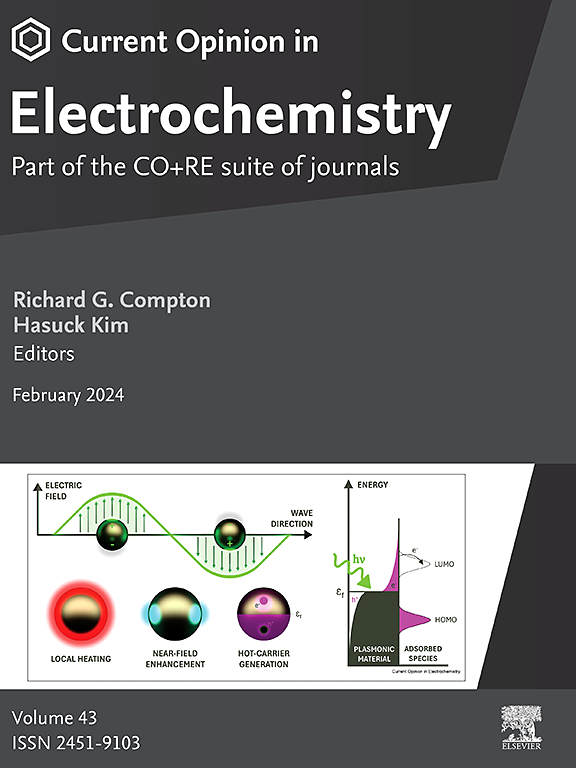Progress and pitfalls in measuring the double-layer capacitance of platinum electrodes
IF 6.9
2区 化学
Q1 CHEMISTRY, PHYSICAL
引用次数: 0
Abstract
Despite extensive research, the double-layer structure at Pt/aqueous electrolyte interfaces (quantified by the double-layer capacitance, Cdl) remains incompletely understood as even for the model Pt(111)/HClO4 interface, anomalous Cdl trends have been reported. These trends were previously ascribed to differences in measurement techniques (i.e. dc methods such as cyclic voltammetry versus ac methods such as electrochemical impedance spectroscopy [EIS]). However, by repeating these measurements using EIS, we clarify that these anomalous Cdl trends are not measurement artefacts but instead reflect intrinsic properties of the Pt(111)/HClO4 interface, necessitating continued investigation. We further highlight the complexity introduced by electrosorbed Hads and/or OHads species resulting from catalytic H2O dissociation, which contribute an adsorption (pseudo)capacitance, Cads. This complicates the deconvolution of Cdl from total capacitance, a challenge further exacerbated by structure-dependent adsorption between different Pt facets. Our goal is to clarify how these factors affect capacitance interpretation at Pt/aqueous electrolyte interfaces, particularly highlighting the progress and challenges in accurately extracting Cdl values from prior studies.

铂电极双层电容测量的进展与缺陷
尽管进行了广泛的研究,但Pt/水电解质界面的双层结构(由双层电容Cdl量化)仍然不完全清楚,即使对于模型Pt(111)/HClO4界面,也报道了异常的Cdl趋势。这些趋势以前被归因于测量技术的差异(即直流方法,如循环伏安法与交流方法,如电化学阻抗谱[EIS])。然而,通过使用EIS重复这些测量,我们澄清了这些异常的Cdl趋势不是测量的人工产物,而是反映了Pt(111)/HClO4界面的固有性质,需要继续研究。我们进一步强调了由催化H2O解离产生的电吸附Hads和/或OHads物种引入的复杂性,它们有助于吸附(伪)电容,Cads。这使得Cdl从总电容中反褶积变得复杂,不同Pt面之间的结构依赖吸附进一步加剧了这一挑战。我们的目标是澄清这些因素如何影响Pt/水电解质界面的电容解释,特别是强调从先前的研究中准确提取Cdl值的进展和挑战。
本文章由计算机程序翻译,如有差异,请以英文原文为准。
求助全文
约1分钟内获得全文
求助全文
来源期刊

Current Opinion in Electrochemistry
Chemistry-Analytical Chemistry
CiteScore
14.00
自引率
5.90%
发文量
272
审稿时长
73 days
期刊介绍:
The development of the Current Opinion journals stemmed from the acknowledgment of the growing challenge for specialists to stay abreast of the expanding volume of information within their field. In Current Opinion in Electrochemistry, they help the reader by providing in a systematic manner:
1.The views of experts on current advances in electrochemistry in a clear and readable form.
2.Evaluations of the most interesting papers, annotated by experts, from the great wealth of original publications.
In the realm of electrochemistry, the subject is divided into 12 themed sections, with each section undergoing an annual review cycle:
• Bioelectrochemistry • Electrocatalysis • Electrochemical Materials and Engineering • Energy Storage: Batteries and Supercapacitors • Energy Transformation • Environmental Electrochemistry • Fundamental & Theoretical Electrochemistry • Innovative Methods in Electrochemistry • Organic & Molecular Electrochemistry • Physical & Nano-Electrochemistry • Sensors & Bio-sensors •
 求助内容:
求助内容: 应助结果提醒方式:
应助结果提醒方式:


